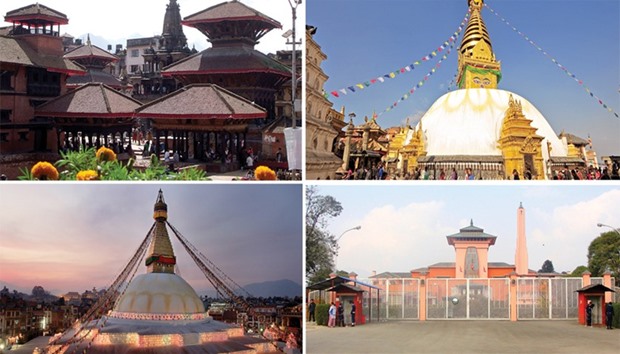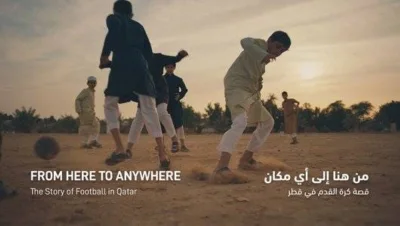Nepal is a landlocked Himalayan country sandwiched between two Asian giants – China and India – and is in the constant backdrop of Himalayas with a vast and humid Gangetic plain on the south. In between the two, there are lush valleys, subterranean gorges, canopies, sloped passes and perennial rivers.
Kathmandu is the capital and the largest city of Nepal. It also hosts the headquarters of South Asian Association for Regional Co-operation (Saarc). The city is spread over 50 sq km and accommodates a population of over a million. Legend says Kathmandu Valley was born after yogi Manjushree opened a channel with his sword to drain the water of the lake.
There is much to see in Kathmandu, from the sacred Pashupatinath on the bank of the holy Bagmati River, stupas and the time-honoured Durbar Squares. Kathmandu City has centuries of history tucked away in all of its corners. It was once ruled by monarchs, who were erected some stunning museum-turned-durbars, monuments, temples, monasteries, gardens, and other structures that are still worth exploring today.
The three Durbar Squares (Kathmandu, Patan and Bhaktapur), the Pashupatinath Temple Region and the Boudhanath Stupa are the architectural and religious sites around Kathmandu Valley listed in the Unesco Heritage sites.
Kathmandu Durbar Square
The Kathmandu Durbar Square houses some superlative structures like Taleju Temple, The Kumari Bahal (residence of the Kumari), Kastamandup (the pavilion of wood) and Kathmandu Durbar Square Museum. It lies to the south of Thamel and the southwest of Narayanhiti Palace Museum. The square is highly recommended for someone interested in spectacular medieval and modern architectural designs that vividly
show the creative part of local Newar community.
Patan Durbar Square
Patan Durbar Square lies in the Lalitpur sub-metropolis and is located around south-central region of Kathmandu Valley. The places worth watching around Patan are Krishna Mandir, Rato Machhindranath Temple, Golden Temple, Kumbheshwor Temple and Ukhu Bahal along with Patan Durbar Square Museum.
Bhaktapur Durbar Square
The third of the three Durbar Squares, Bhaktapur Durbar Square is a plaza around the 55 Window Palace. This place lies approximately 13 kilometres east of Kathmandu. Nyatpola Temple, Bhairav Nath Temple and Pottery Square are the exotic places around this square worth watching. Bhaktapur used to be the ruling throne of the Kathmandu Valley until the king, Yakshya Malla, in 1482, divided the kingdom between his three sons, who eventually lost their rule to the Shah dynasty from Gorkha. But, before losing the kingdom to the Shah kings, Bhaktapur was renowned for its Malla Yuddha – a fierce combat between two wrestlers.
Pashupatinath Temple
The Pashupatinath Temple, located about five kilometres east of Kathmandu, is one of the main pilgrimage sites of Hindus. Built in Pagoda style, the Pashupatinath Temple is a sacred place to worship Lord Shiva. Bagmati River bank by the Pashupatinath Temple, Aryaghat is one of the most sacred cremation sites in the country.
The Narayanhiti Palace Museum
The Narayanhiti Palace Museum is located in the central part of Kathmandu and is east of Thamel. It served as the residential office of Nepali monarchs until the republic system was introduced in May 2008. The palace is infamous for the royal massacre in June 2001. The museum consists of 52 rooms and was designed by American architect Benjamin Polk. The museum is open all days except for Tuesdays, Wednesdays and public holidays. It houses a number of things associated with the previous Shah rulers of Nepal.
Boudhanath Stupa
One of the Unesco Heritage sites, Boudhanath Stupa is one of the largest and holiest Buddhist stupas in the world. Boudhanath Stupa has five statues of meditating Buddha symbolising fire, earth, air, water and ether. Boudhanath is the religious centre of Nepal’s Tibetan/Buddhist communities, and is surrounded by around 50 monasteries and objet d’art shops. A trip to Boudhanath may be a perfect antidote to the existing hustles and bustles of central Kathmandu. The Tibetan custom is to walk around the Stupa in a clockwise direction. The Boudhanath Stupa lies seven kilometres north of Kathmandu.
Kopan Monastery
The Kopan Monastery lies in a northern hilltop of Kathmandu Valley and is eight kilometres away from Thamel. This monastery offers daily and longer meditation and Yoga courses. It has a beautiful garden, gift shop, a café and provides a fine panoramic view of the Kathmandu Valley.
The Swambhunath Temple
The Swambhunath Temple, or Monkey Temple, lies in the west of Kathmandu atop a hill. The Swambhunath Complex consists of a stupa, temples, shrines, a Tibetan monastery, a museum and a library. You can also access the “365 worn steps” that lead to eastern hill of Swambhunath. Swayambhu literally means “self-existent one”. According to translations from an inscription dating back to 460AD, it was built by King Manadeva and by the 13th century, Swayambhunath had developed into an important centre of Buddhism. The stupa sits atop the hill and the exceedingly steep stone steps leading up to the shrine is quite a challenge. However, there is also a road going up almost to the top and you can drive there. A large number of Buddhists and Hindus alike visit Swayambhunath throughout the day.
Godavari Botanical Garden
The Godavari Botanical Garden lies about 15 kilometres south of Kathmandu Valley and is surrounded by an evergreen wood spanning over 82 hectors. Highlights include the decorative Coronation Pond, visitor centre (with interesting exhibits on Nepal’s flora), greenhouses, and collections of rhododendrons, lilies, orchids, cacti and ferns. Spring and autumn seasons are the best times to visit the garden. The garden is open to all almost every day.
The Garden of Dreams
The Garden of Dreams lies on the way to Thamel from Narayanhiti Palace Museum. The Garden – formal in style – occupies about half a hectare. Its blossoming lawns, sunken flower gardens, large central pond, fountains, gazebos and three neo-classical pavilions are kept in an immaculate array. Built by Field Marshall Kaiser Shumsher, The Garden was inspired after a trip to Edwardian England using funds that Kaiser had won from his father in a game of cowrie shells.
Budhanilkantha
Budhanilkantha is located below the Shivapuri hill in the northernmost part of Kathmandu Valley, seven kilometres from the heart of Kathmandu City. It is a religious complex with a pond and a statute of Vishnu reclining in coils of a cosmic serpent.
Bais Dhara
Bais Dhara along with its beautiful park is located in the west of Kathmandu. Lots of beautiful bamboos, trees, varieties of flowers, ponds with fishes, and the twenty-two gushing waterspouts can be found inside the Balaju Park. There is also a swimming pool where you can enjoy swimming during the summer.
Phulchoki Height
Phulchoki, or the hill of flowers, is the highest hill surrounding Kathmandu Valley and is famous for short and day-long hikes. The hill is filled with rhohodendron and oak trees, multiple species of orchids, and varying types of colourful birds and butterflies. Phulchoki Height is 16 kilometres south east from Kathmandu and its takes around four hours to reach the top.
Shanti Ban Buddha
Inspired by Japanese Pagoda movement, Shanti Ban Buddha is an epic sized Buddha statue located on the hillside above Godavari. The statute provides a spiritual experience amidst the evergreen setting of Godavari.
The tallest statue of Shiva
The tallest statue of Shiva is situated in Sanga, 20 kilometres from Kathmandu, and this 143-feet-high statue is called the Kailashnath Mahadeva Statue. Around 5,000 visitors come daily to watch this magnificent statue made of copper, cement, zinc and steel.

TOP LEFT: Patan Durbar Square lies in the Lalitpur sub-metropolis and is located around south-central region of Kathmandu Valley. TOP RIGHT: The Swambhunath Temple lies in the west of Kathmandu. BELOW LEFT: The Boudhanath Stupa is a Unesco Heritage site. BELOW RIGHT: The Narayanhiti Palace Museum served as the residential office of Nepali monarchs until the republic system was introduced in May 2008.


